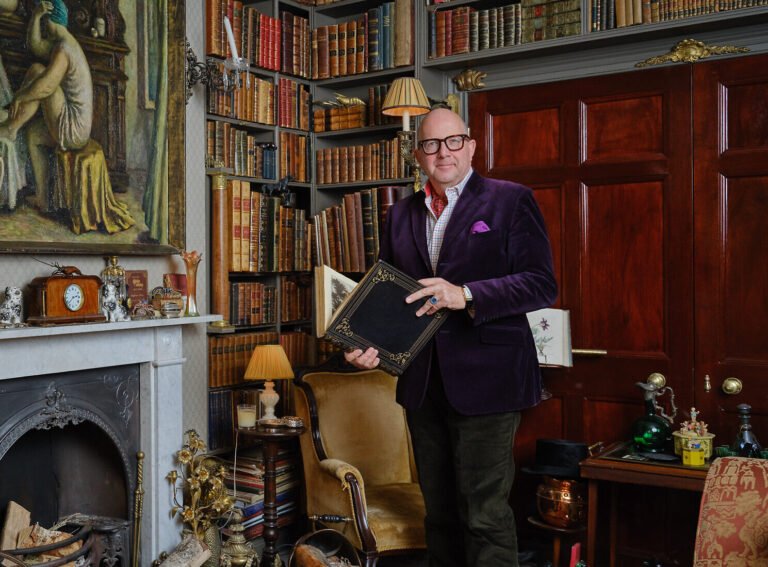A growing number of investors are choosing art over property as their asset of choice, says Philip Hoffman, founder AND CEO of one of the world’s leading art investment and advisory companies.
Hoffman, who runs the Fine Art Group, which has managed and transacted over $2 to $3 billion of art and values and advises on over $10-20 billion annually, says wealthy people who have typically put their money into property are turning to art as they realise its strong track record as an investment.
He tells Jewish News: “The combination of art’s investment potential, ability to be moved around, enjoyment factor, and its role as an inflation hedge makes it an ideal choice for people. Anyone who has sold their business or made a very good living is now deciding to put maybe five or 10 percent of their wealth into art, instead of real estate.
“We are seeing a lot of people who have sold their business, for say £20m or £30m thinking: ‘I’ll put £2m or 3m into art as an alternative asset, inflation hedge and to have something to show on my walls.’ They see art as a diversification.”

Philip Hoffman, founder of the Fine Art Group
Founded in 2001 as the Fine Art Fund, the Fine Art Group has expanded its services to offer art investment, advisory, art finance, sales agency and philanthropy to clients worldwide. The company’s team of around 80 represent over 350 family offices in 28 countries including several of Forbes’ listed wealthiest families. Clients can expect to receive returns of between five and 15 percent per annum, sometimes more.
Chelsea-based Hoffman fell into the art world by chance. Having graduated from York University with an economics degree, he worked as a chartered accountant at KPMG International before landing a job as finance director at Christie’s. Aged 29, he found himself on the board and stayed at Christie’s for 13 years before setting up the Fine Art Fund. Initially it provided access to the art market for investors who were interested in diversifying their portfolios beyond traditional assets like stocks and bonds before expanding its services for all things art related. It also specialises in fine jewellery, luxury watches, cars, wine, and other valuable collectibles.
More than one third of the team are ex Christie’s and Sotheby’s experts, including the former Chairman of Sotheby’s Asia, Patti Wong. Last year, The Fine Art Group launched the joint venture Patti Wong & Associates to expand into Asia following the success of its collaboration with Allan Schwartzman, the New York-based art advisory firm.
The Group has been attracting an increasing number of younger art collectors. “They are more comfortable treating their art collections as an asset,” says Hoffman. “Our clients, which number between 25 and 55, are mostly under 40. The 60-70-year-old sailors are like, ‘We’ve done it. We’ve been there. We’re not going to live long enough to see it out.’”
But investing in art is not that easy, notes Hoffman, who has been working in the industry for over three decades. “What I always say to clients is: you should get professional advice if you are spending more than you would on a holiday. So, if you or I might spend $2,000 on a holiday, let’s buy a $2,000 painting, treat it as an expense and enjoy it.
“Smart people would build an art collection with an advisor who understands how to make money so they can buy art that they love and make significant money at the same time. For some clients it’s not about making money, but it is about protecting their assets and safe-guarding their art collection for future generations. We spend a lot of time educating our clients, not just about the market but also about the academic and historical importance of the artist and artworks that interest them. Our job isn’t to tell clients what to buy but to make sure they are properly informed before they do.”
Hoffman says that his team have stopped clients buying 90 per cent of the art they were showed because they deemed it was either overpriced or would depreciate in value.
After two years of recovery growth from the Covid-19 pandemic, the global art market is facing a challenging time. It shrank last year by four percent, from $67.8bn to $65bn, according to a Global Art Market Report, and remains down, partly due to rising interest rates and the geopolitical situation and instability. But Hoffman believes “now is the best time to buy” that he has seen in ten years. “Collectors selling will have to take a discount. I think the market will rebound in about three or four years. Now is the time to build an art collection, which can take up to 25 years.”
Asked for his top tips, Hoffman says: “Buy less but better quality, buy one or two and build up over many years, buy the best quality you can afford, ask people in the industry and if you can afford to, get proper advice.”

